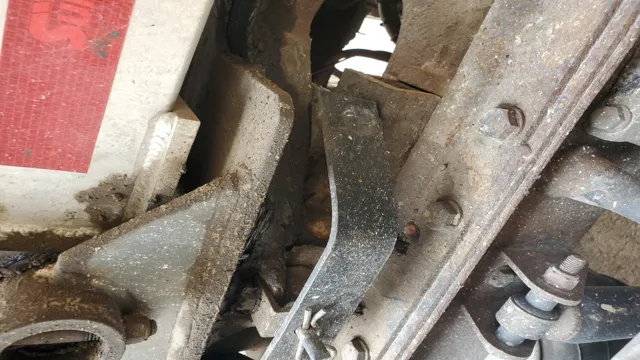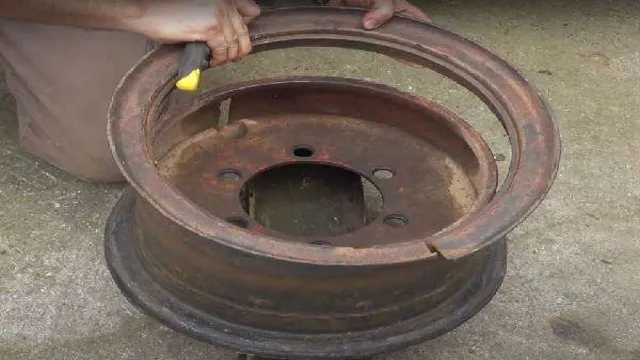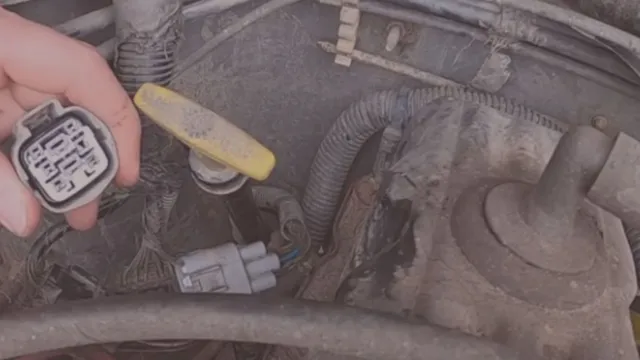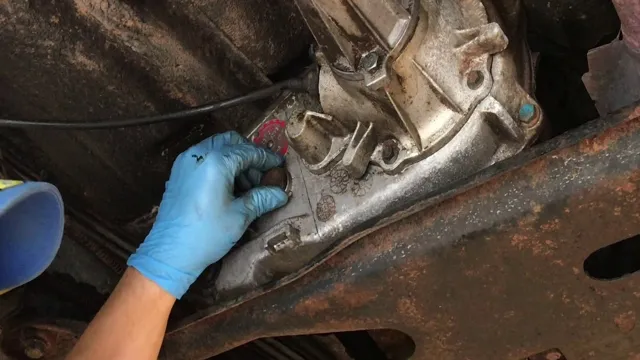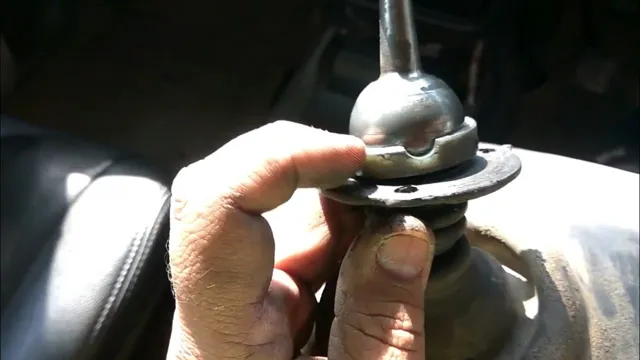Master the Art of Fifth Wheel Blocking: A Comprehensive Guide
If you’re new to hauling a fifth wheel, you may be wondering how to block it up. Whether you’re parked on an uneven surface or adjusting your trailer height, blocking up your fifth wheel requires some know-how. Fortunately, there are a few tips and tricks that can help make this process easier and safer.
In this blog, we’ll share some expert advice on blocking up a fifth wheel, including what materials to use, how to position your blocks, and other helpful tips. So, whether you’re an experienced RVer or a newbie, read on for all you need to know about blocking up your fifth wheel.
What is a fifth wheel?
If you’re new to the world of RVing, you might be wondering what a fifth wheel is. Simply put, a fifth wheel is a type of RV that attaches to the bed of a pickup truck using a hitch mounted in the truck bed. It’s named such because it’s a wheel that sits above and slightly forward of the truck bed’s rear axle.
Now, let’s talk about how to block up a fifth wheel. The first step is to find a level spot to park your fifth wheel. Then, use leveling blocks to even out the ground underneath the wheels on each side.
Once your fifth wheel is level, chock both the front and back wheels to prevent it from rolling. Finally, lower the adjustable landing gear, making sure it is firmly on the ground and supporting the weight of the fifth wheel. With these steps, your fifth wheel will be solidly blocked up and ready for a comfortable stay.
Why Blocking Up a Fifth Wheel is Essential
Ensuring Safety and Stability
Blocking up your fifth wheel correctly is crucial for safety. An improperly balanced RV can become unstable, increasing the risk of tipping over, especially in windy conditions or on uneven ground. This stability is vital not only for the structure of your fifth wheel but also for the safety of its occupants.
Preventing Damage
An unblocked or improperly blocked fifth wheel can lead to significant damage. The weight distribution will be off, putting undue stress on axles and suspension systems. Over time, this can lead to costly repairs and decreased longevity of your RV.
Enhancing Comfort
A stable fifth wheel isn’t just about safety—it’s also about comfort. A properly blocked RV will prevent rocking and swaying, making it more comfortable to live in. This stability is especially important when you’re sleeping, cooking, or moving around inside the RV.
Definition and basic design
A fifth wheel is a type of trailer hitch that is commonly used for towing large recreational vehicles (RVs). It is named after the fifth wheel coupling that connects the trailer to the towing vehicle. The design of a fifth wheel coupling allows for greater stability and weight distribution compared to other types of hitches, such as ball and socket or pintle hitches.
This is because the center of gravity is directly above the towing vehicle’s rear axle, which can improve handling and braking. The fifth wheel itself is a circular plate that is mounted in the bed of a pickup truck, with a kingpin on the underside of the trailer attaching to it. This arrangement allows for a tighter turning radius and more maneuverability compared to a bumper pull trailer.
Overall, fifth wheels are a popular choice for those seeking a comfortable and spacious living space on the road.
Importance of proper blocking up
Proper blocking up is essential for the safety of any trailer. One crucial element of trailer safety is the fifth wheel. But what exactly is a fifth wheel? In simple terms, a fifth wheel is a coupling device that connects a tractor unit to a semi-trailer.
It is called a fifth wheel because it is mounted on the bed of the truck, directly above its rear axle, which is usually the fifth wheel on the vehicle. The fifth wheel helps distribute the weight of the trailer onto the truck’s rear axle and suspension system, making it easier to tow. It is a vital component of any semi-truck combination, and it is essential to make sure that it is secure and properly connected.
So, it’s important to ensure that the fifth wheel is correctly positioned and locked in place before towing any trailer. Failure to do so can lead to accidents and serious injuries. Therefore, it’s always best to double-check that everything is secure before hitting the road.
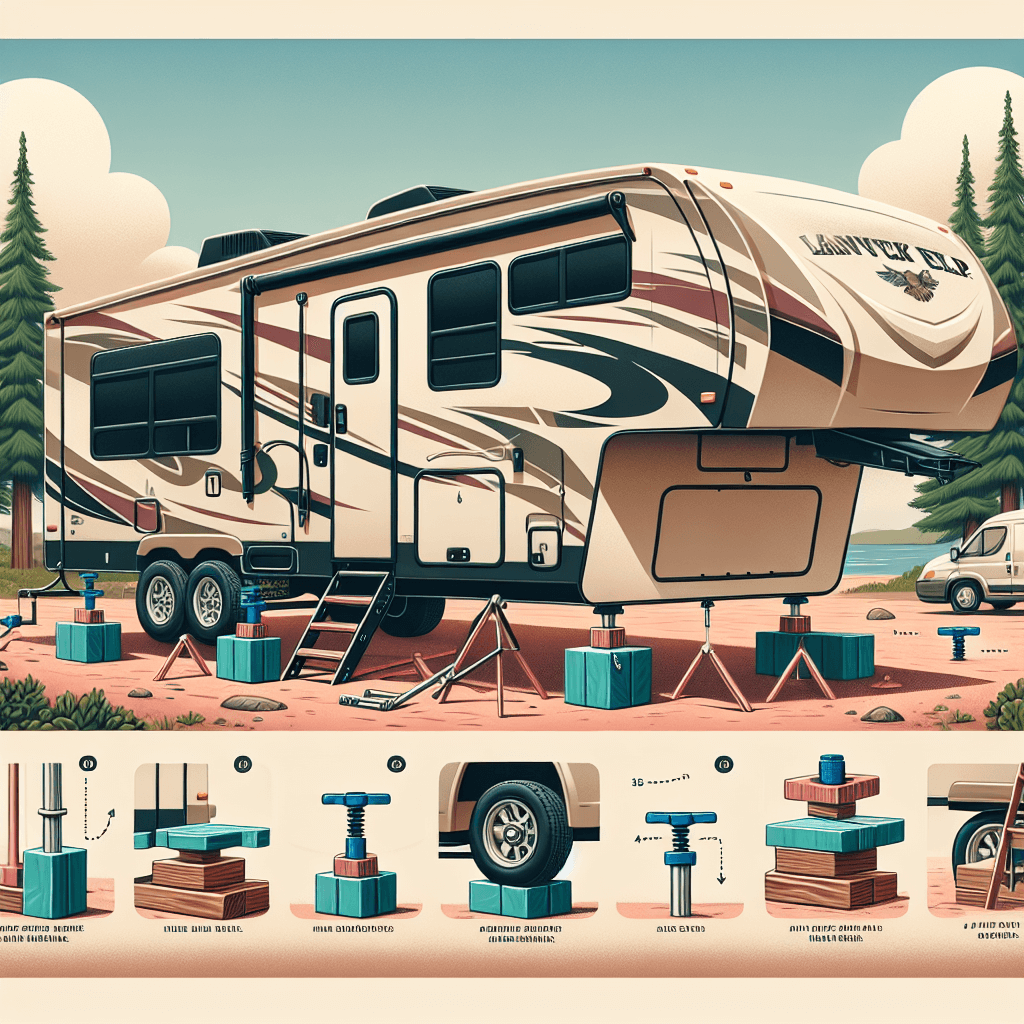
Preparation
When preparing to block up a fifth wheel, there are a few things to keep in mind. First, make sure you have the right type of blocks – you’ll want sturdy ones made specifically for RVs. Then, you’ll want to find a level spot to park your fifth wheel.
It’s important to make sure the blocks are placed evenly and securely, so take your time and double check everything. Once the blocks are in place, you can slowly back your fifth wheel onto them, checking for stability as you go. It’s important to make sure everything is secure before unhitching your fifth wheel, as it could lead to a dangerous situation if it’s not properly supported.
With a little patience and care, blocking up your fifth wheel can be done safely and easily.
Choosing the right blocking material
When it comes to choosing the right blocking material, preparation is key. The first step in selecting the right material is to understand the specific needs of the project. Consider factors such as the type of surface being blocked, the level of protection needed, and the length of time the block will be in place.
It’s important to choose a material that is strong enough to withstand the pressure of the block, but also flexible enough to contour to the surface being blocked. Foam, cardboard, and rubber are all commonly used materials for blocking, but each has its own unique properties that make it more suitable for some projects than others. By taking the time to carefully consider the needs of the project, the right blocking material can be chosen to ensure a successful outcome.
Measuring and marking the placement
When it comes to woodworking, measuring and marking the placement of your cuts are crucial steps to getting the desired end result. Before you even start your saw, take the time to carefully plan out your measurements and mark your wood accordingly. This will help ensure that your cuts are precise and accurate, preventing any mistakes that could ruin your project.
One of the best tools for accurately marking your wood is a measuring tape. Make sure that you are using a high-quality measuring tape that is easy to read and has clear markings. You may also want to consider using other tools such as squares and rulers to ensure that your cuts are perfectly straight and at the correct angle.
By taking the time to properly measure and mark your wood, you will set yourself up for success and avoid any frustration or disappointment down the line. So, take your time and don’t rush this important step in the woodworking process.
Techniques for blocking up
If you own a fifth wheel, it’s crucial to know how to block it up properly for stability and safety. First, find a level spot to park your rig. Chocks are essential and should be placed in front of and behind the tires to prevent any rolling.
Next, position the blocks, which can be made of various materials like wood or plastic, under the appropriate places. The blocks should be stacked in a pyramid shape and gradually increased in height until the rig is level. Be sure to check the level of the rig when you finish, as the weight of the fifth wheel could cause it to settle further into the blocks.
Finally, remember to recheck the blocks after a few hours to ensure they didn’t shift. With these techniques, your fifth wheel will be securely blocked up for a comfortable and safe journey.
Using leveling blocks
When it comes to leveling your RV, there are a few different techniques for blocking up your vehicle. One popular option is using leveling blocks. These blocks provide a stable and level surface for your RV to sit on, ensuring a comfortable and safe camping experience.
To use leveling blocks, you simply place them under the wheels of your RV on the low side, building up the height until your RV is level. It’s important to use enough blocks to create a stable and sturdy base, but not too many that you stack them too high. A good rule of thumb is to use no more than three blocks per wheel.
By using leveling blocks correctly, you can easily level your RV and enjoy a comfortable and stable camping experience.
Using stabilizing jacks
Stabilizing jacks are essential tools for leveling and stabilizing recreational vehicles or trailers. Using the right blocking techniques can make your RV feel more stable and secure, as well as prevent it from rocking or swaying while parked. One simple method is to use wooden blocks or leveling pads, placed under the jacks to provide extra support.
If your RV has a front hitch, it’s best to block the front wheels and put the jacks behind the rear wheels. This helps to distribute the weight evenly across all four jacks. When using stabilizing jacks, always make sure they are placed on level ground, and avoid raising the RV too high to prevent damage or instability.
With the right techniques in place, you can ensure a safe and comfortable stay in your RV, wherever your travels may take you.
Using wheel chocks
Using wheel chocks is a crucial technique for blocking up your vehicle. Wheel chocks are a safety device that helps prevent your vehicle from rolling or shifting while parked or stored. These chocks come in various sizes and materials, such as rubber, plastic, or wood.
To use them properly, place the chocks snugly against the wheels on either side of the vehicle. This will prevent the wheels from moving in the event of a sudden jolt or accidental release of the brake. The most significant benefit of using wheel chocks is the peace of mind and safety it brings.
By taking the time to use them, you can reduce the risk of accidents and protect yourself and others from harm. Remember, safety should always be your top priority when working with vehicles. So, make sure to choose the right size and material for your chocks and use them every time you park or store your vehicle.
Safety precautions
If you’re new to towing a fifth wheel, blocking it up may seem like an intimidating task, but it’s an important safety precaution that should never be overlooked. By blocking up your fifth wheel, you can ensure that it remains level and stable while parked, even on uneven terrain. To get started, you’ll need some sturdy blocks, preferably made of wood or plastic, and a reliable jack to lift the fifth wheel.
Begin by positioning the blocks directly behind the rear wheels of the trailer and place the jack near the front end. Slowly raise the front of the fifth wheel until it’s high enough to slide the blocks underneath. Be sure to place the blocks in a way that distributes the weight evenly and prevents the fifth wheel from shifting.
Once the blocks are in place, gradually lower the trailer and check its levelness with a carpenter’s level tool. If necessary, adjust the height of the blocks until the fifth wheel is completely level. Remember, taking the time to block up your fifth wheel properly can prevent accidents and injury, so it’s always worth the effort.
Securely parking and stabilizing the trailer
When it comes to parking and stabilizing your trailer, safety should always be your top priority. One of the first things you should do is make sure the parking brake is engaged and that the wheels are chocked. This will prevent the trailer from rolling or moving unexpectedly.
Additionally, you should be mindful of where you park the trailer – try to choose a level, flat surface to avoid any instability. If you’re parking on an incline, the use of wheel chocks is even more crucial. Remember, it only takes a small movement or shift in weight to cause the trailer to become unbalanced and potentially dangerous.
Always double-check that the chocks are secured and in the correct position before you start loading or unloading your trailer. By taking these safety precautions, you can help ensure that you and your cargo stay secure while the trailer is parked and stabilized.
Avoiding hazardous materials and locations
When it comes to keeping ourselves and our loved ones safe, one of the best things we can do is to avoid hazardous materials and locations. Whether at home or out and about, it’s important to be aware of the potential dangers that could be lurking around us. This means keeping an eye out for warning signs, paying attention to local news and alerts, and being mindful of our surroundings.
In addition, it’s important to take the time to educate ourselves about potential hazards and how to avoid them. This might include learning about the different chemicals and materials that could be harmful, knowing how to read warning labels, and understanding what to do in the event of an emergency. By taking these simple steps, we can help ensure that we stay safe and healthy, no matter where we are or what we’re doing.
So why not take a few minutes to brush up on your safety knowledge today? Your future self will thank you for it!
Tools and Equipment Needed
Essential Tools List
Before you start the process, ensure you have the following tools and equipment:
- Leveling Blocks: These are essential for stabilizing your fifth wheel on uneven ground.
- Wheel Chocks: To prevent your RV from rolling while you’re working on it.
- Hydraulic Jacks or Stabilizer Jacks: For lifting and supporting the RV.
- Torque Wrench: To tighten bolts and ensure everything is secure.
- Safety Gloves and Goggles: For personal protection during the process.
Purpose of Each Tool
- Leveling Blocks: These help achieve a level position on uneven terrain.
- Wheel Chocks: Used to immobilize the wheels, preventing accidental movement.
- Hydraulic Jacks or Stabilizer Jacks: These are used to lift and hold the RV in place while you set the blocks.
- Torque Wrench: Ensures that all nuts and bolts are tightened to the correct specifications.
- Safety Gear: Protects you from potential injuries while performing the steps.
Step-by-Step Guide
Preparing the Area
- Choose a Level Spot: Find the most level ground possible to park your fifth wheel.
- Clear Debris: Remove any rocks, sticks, or other debris from the area where you’ll be setting up.
- Position the RV: Park your fifth wheel in the desired location, ensuring it’s as level as possible before you begin blocking it up.
Blocking Up the Fifth Wheel
- Engage Parking Brake: Ensure the parking brake is engaged to prevent movement.
- Place Wheel Chocks: Position wheel chocks on both sides of the tires to immobilize the RV.
- Set Up Leveling Blocks: Place leveling blocks under the stabilizer jacks or hydraulic jacks.
- Lift the RV: Use the jacks to lift the RV slightly off the ground, just enough to set the blocks securely.
- Install Blocking: Place the blocks under the frame, focusing on distributing weight evenly.
- Lower and Secure: Carefully lower the RV onto the blocks, ensuring they’re positioned correctly and securely.
Final Checks
- Check Stability: Push gently on the sides of the RV to ensure it’s stable and not rocking.
- Recheck Chocks and Blocks: Make sure all wheel chocks and blocks are in place and secure.
- Level the RV: Use a level to check that the RV is horizontally balanced.
Common Mistakes to Avoid
Skipping the Chocks
One of the most common mistakes is forgetting to use wheel chocks. This oversight can result in the RV rolling and potentially causing severe damage or injury.
Uneven Blocking
Not distributing the weight evenly can lead to instability. Ensure that the blocks are placed symmetrically to support the entire structure adequately.
Ignoring Final Checks
Skipping the final stability and level checks can result in an uncomfortable and unsafe setup. Always double-check your work to ensure everything is secure.
Tips for First-Time RV Owners
Practice Makes Perfect
If this is your first time blocking up a fifth wheel, practice in a controlled environment, like your driveway, before heading out on an adventure. This practice will build your confidence and ensure you’re well-prepared.
Keep a Checklist
Having a checklist can help ensure you don’t miss any steps. Write down the steps outlined above and tick them off as you go through the process each time.
Don’t Rush
Take your time to do it right. Rushing through the process can lead to mistakes that compromise safety and stability. Allow yourself ample time to set up correctly.
Conclusion
In conclusion, blocking up a fifth wheel is like building a sturdy foundation for a mobile home. It requires precision, patience, and a bit of creative engineering. Remember, the key is to distribute the weight evenly and ensure stability.
And just like all great projects, it may take a few attempts to get it just right. So, roll up your sleeves, grab some blocks, and get ready to block and roll!”
FAQs
What is the purpose of blocking up a fifth wheel?
Blocking up a fifth wheel is necessary to level the RV and prevent it from rocking while parked. It also helps to distribute the weight evenly and protect the tires from damage.
What materials are needed to block up a fifth wheel?
To block up a fifth wheel, you will need leveling blocks, wheel chocks, and a level.
How do I determine how many blocks to use?
The number of blocks needed will depend on the level of the ground. Use a level to determine which side needs to be raised and add the number of blocks necessary to achieve a level surface.
What is the proper way to place the blocks under the wheels?
Place the leveling blocks in front of and behind the wheels on the low side and drive up onto them. Place wheel chocks behind the wheels to prevent rolling.
Can I use other types of blocks instead of leveling blocks?
While leveling blocks are designed specifically for this purpose, you can use other materials such as cinder blocks or wooden boards as long as they are stable and can support the weight of the RV.

